- »La Nube« Mexico City, 2023
- Group Exhibition »End of History?« Stockholm, 2022
- Group Exhibition »Almond shaped eyes for circles and dots • Circles for eyes and almond shaped dots • Dots and almonds for circles in eyes« Mexico City, 2022
- »EIN AUGE, OFFEN« Berlin, 2017
- Group Exhibition »GATHERED FATES curated by Ignasi Aballí« Berlin, 2015
- Group Exhibition »DRAWN« Berlin, 2014
- Group Exhibition »Summer show« Berlin, 2012
- »Nonetheless« Berlin, 2011
- Group Exhibition »SUMMER SHOW« Berlin, 2009
- »Landschaftsabfälle« Berlin, 2008
- »Kein Warum« Berlin, 2005
- Group Exhibition »Out Of Place« Berlin, 2004
- »Nachtruhe« Berlin, 2002
- Group Exhibition »Through Melancholia and Charm« Berlin, 2000
- »Ordnung« Stockholm, 1997
- »Rampen« Stockholm, 1994
- Group Exhibition »Mnemosyne 1273« Stockholm, 1992
- Group Exhibition »Art against AIDS« Stockholm, 1991
- »Mirosław Bałka« Stockholm, 1990
- balka-cv.pdf
- cv-mb-2025_01_ongoing.pdf
-
Anda Rottenberg: Miroslaw Balka. Pursuing Meaning, Fleeing Meaning, , Pirelli Hangar Bicocca, Milan 2017
-
Simone Menegoi: Social Body. The Individual and the Collectivity in the Work of Mirosław Bałka, Pirelli Hangar Bicocca, Milan 2017
-
Alegra Pesati: All that Remains: the Drawings of Mirosław Bałka, Muzeum Sztuki, Łódź 2017 2017
-
Julian Heynen: That's How it Is, in: Mirosław Bałka. How it is, Tate Publishing, 2009
-
Mirosław Bałka in conversation with Rafał Jakubowicz, Documenta Magazine, 2007
-
Peter Schjeldahl: Polish Haiku, The Reinassance Society, 1992
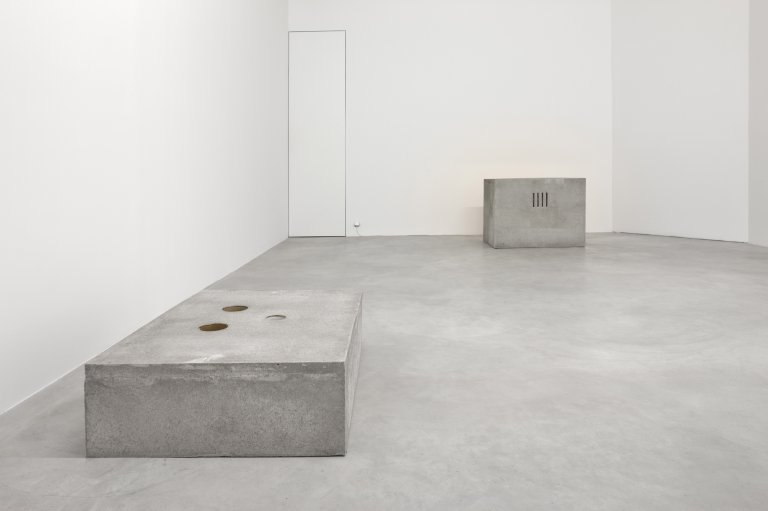
Installation view
Mirosław Bałka »Landschaftsabfälle«
Berlin, September 06, 2008 - October 11, 2008
Galerie Nordenhake is pleased to present an exhibition with new sculptures by Mirosław Bałka, one of the most significant Polish artists emerging after the cold war. The show titled ‘Landschaftsabfälle’, which could be literally translated to ‘landscape waste’, is dealing with leftovers of architecture and everyday life and presents five new works, denominated only by their measurements and austerely dispersed through the two rooms of the gallery.
All the works are made out of industrial material such as steel and concrete and take basic geometric forms. Another shared element is the combination of different types of objects with a concrete base. In doing so the artist redeems the banality of their original state of existence through the strength of the new hosting material. In the first room, the visitor’s senses are challenged by the smell of schnapps vaporized by a pump titled ‘56 x 72 x 72’. This element recalls an atmosphere vaguely suspended between boredom and violence. Cheap alcohol was for example particularly popular among guards and death squads during the Second World War. The idea of violence, this time in a rebellious and anarchic sense, is strongly related to ‘105 x 25 x 25’, a brick installed on a stand, tempting the viewer to grab it and smash the window. A direct interaction with the visitor is required for ‘106 x 151 x 194’, a sculpture where the old balustrade of a balcony, recovered from the house of the artist’s family, can be manually turned thus producing a disturbing metal sound. Balka’s works have a bare and elegiac quality that is underlined by a careful, minimalist placement of the works, as well as the gaps and pauses between them.
In the second room Bałka explores the metaphorical resonance of light in '97 x 68 x 74' by creating a contrast between the threatening and claustrophobic atmosphere given by an old prison’s barred window and the warm, welcoming light, metaphorically related to a protective familiar environment. Close to it the artist presents ’97 x 68 x 74’, three tin cans embedded in a solid body of concrete. The objects in question undergo a process of transformation where the residual aspect, the accumulation of all that is left behind, gives them a new dignity. This subtle meditation on the idea of abandonment and residue raises many questions about the after-life of objects, existences and ideas. What can be retrieved, and what can be remembered? How can the residual become the engine of meaning?
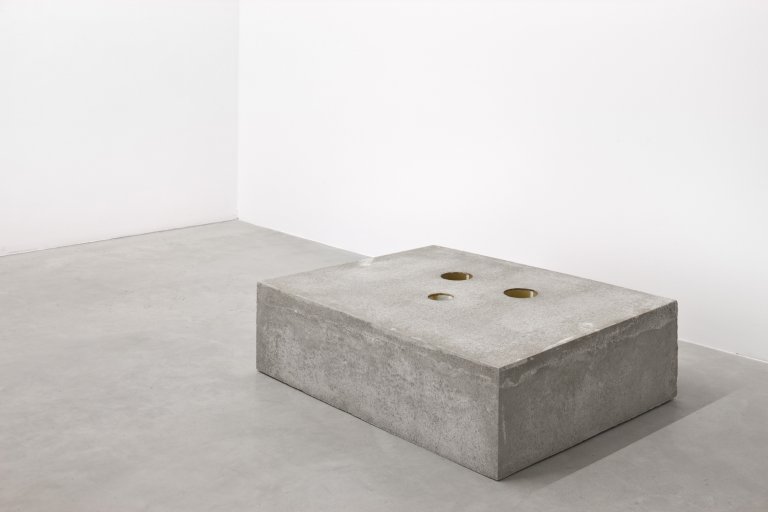
97 x 74 x 28, 2008, concrete, tin cans, dimensions same as title in cm
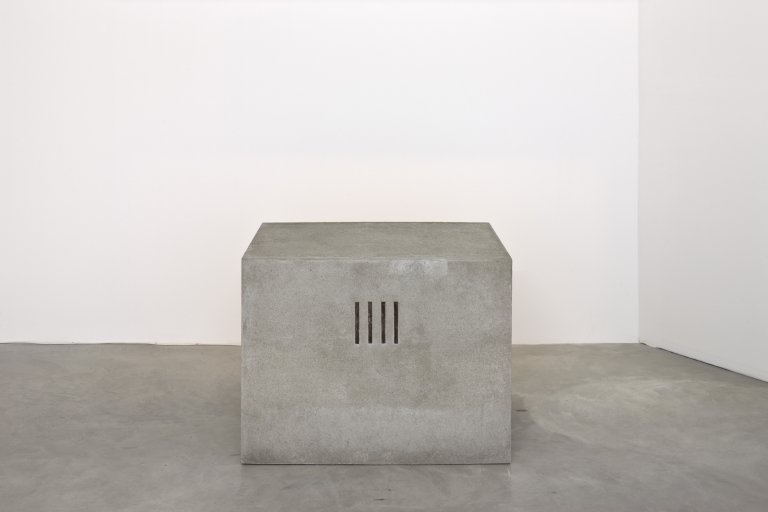
97 x 68 x 74, 2008, concrete, steel, electric light, dimensions same as title in centimetres
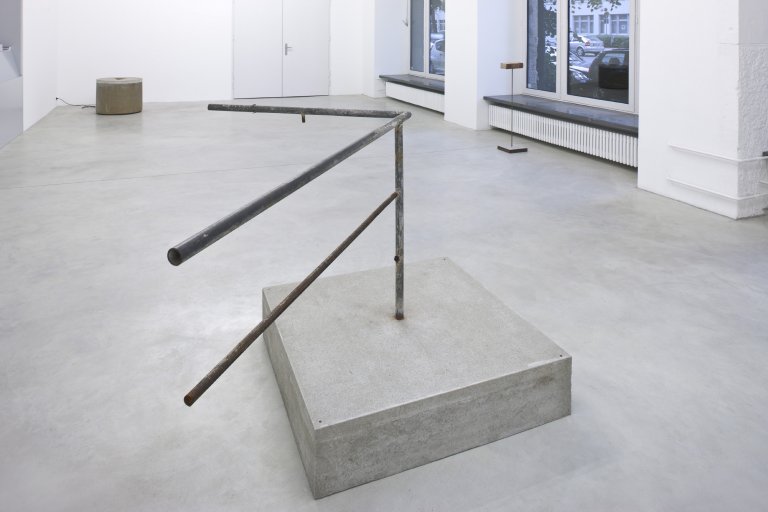
Installation view "Landschaftsabfälle", Galerie Nordenhake Berlin 2008
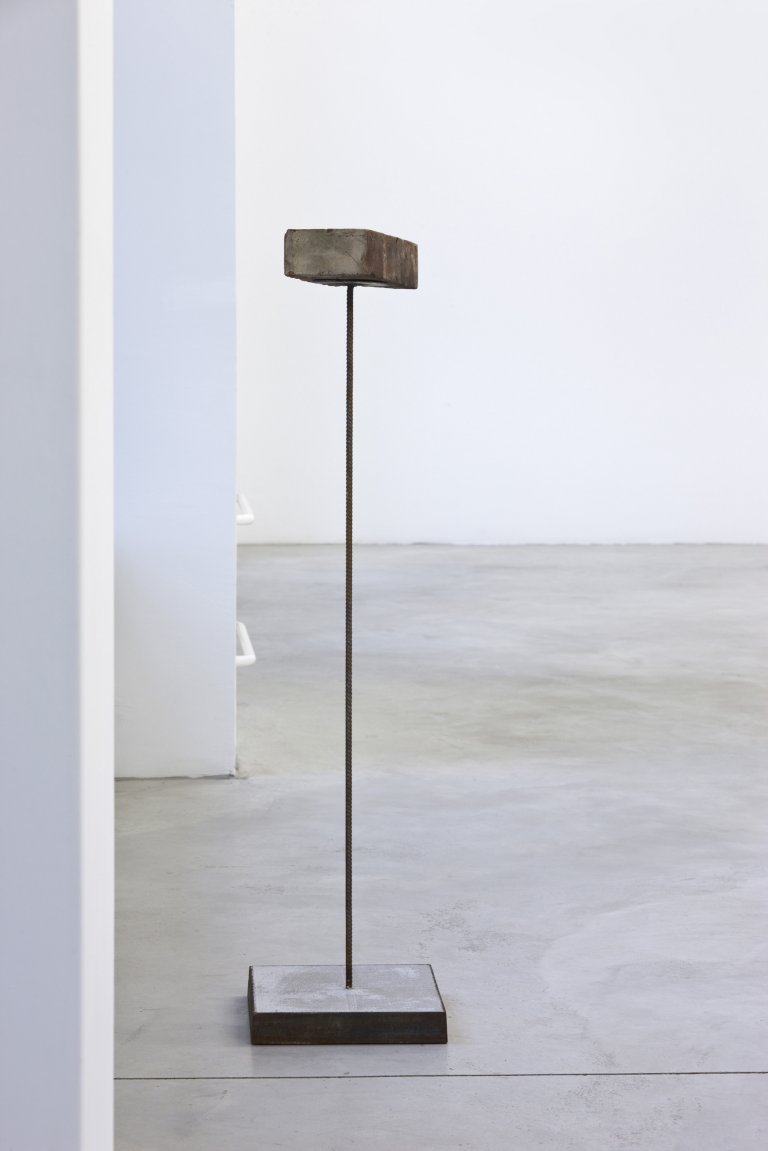
105 x 25 x 25, 2008, concrete, steel, brick, dimensions same as dimensions in centimetres
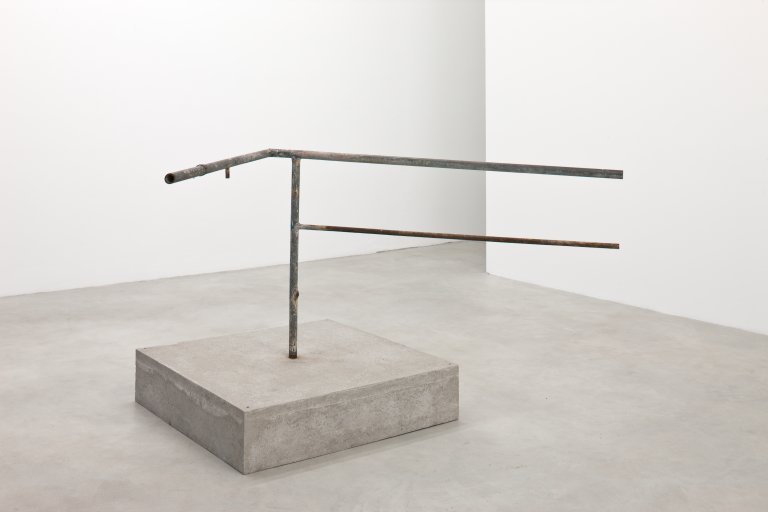
106 x 151 x 194, 2008, concrete, steel, dimensions same as title in centimetres